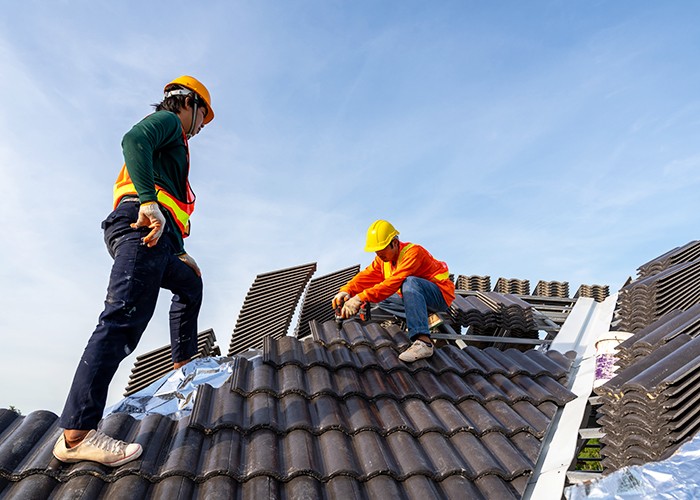
When it comes to protecting your home, the shape of your roof plays a crucial role. Have you ever wondered why some roofs experience frequent leaks or debris buildup? If you’re searching for reliable roofing services in Bronx NY, understanding how different roof shapes influence water flow and maintenance can save you time and money. Let’s explore how gables, hips, valleys, and dormers affect your roof’s performance—and what you can do to keep your home safe and sound.
Why Does Roof Shape Matter for Water Flow?
Your roof’s shape isn’t just about curb appeal—it directs how water moves during rainstorms or snow melts. Gable roofs, for example, promote straightforward water runoff thanks to their steep slopes. But, where there are valleys or dormers, water tends to slow down, increasing risks of pooling and leaks.
- Valleys need proper valley flashing to prevent water intrusion at their junctions.
- Hip roofs encourage even water dispersion but require precise hip roof drainage systems to avoid oversaturation.
- Low-slope transitions can create water backup zones if not carefully designed with water diversion planning.
Quick tip: Regular inspection of flashing and drainage paths can prevent costly repairs down the line.
How Does Roof Design Influence Debris Build-Up?
Have you noticed leaves and twigs collecting more on certain roof sections? Debris accumulation often correlates directly with roof shape. Valleys and dormer leak points are natural traps for debris, which can block water flow and damage shingles.
- Dormers add architectural charm but introduce complex angles that increase dormer leak points.
- Valleys funnel debris into narrow channels, often clogging gutters and drainage systems.
- Gable roofs typically have fewer debris traps but require vigilant maintenance along eaves.
Did you know? According to the National Roofing Contractors Association (NRCA), roofs with poorly maintained valleys can increase water damage risk by up to 30% annually (2024 data).
What Long-Term Maintenance Challenges Should You Expect?
Maintaining a roof isn’t just about fixing leaks—it’s about preventing them through smart design and upkeep. Different roof shapes demand unique maintenance strategies to extend their lifespan and protect your home’s value.
- Hip roofs require consistent checks of hip roof drainage to avoid water pooling and ice dams.
- Complex intersections, such as where dormers meet the main roof, need ongoing inspections for dormer leak points.
- Flat or low-slope sections must be managed carefully with adequate waterproof membranes and drainage.
Expert opinion: John, a seasoned architectural analyst, notes, “Designing roofs with water flow and debris prevention in mind reduces maintenance costs by nearly 25% over 10 years.”
How Can You Optimize Your Roof Design for Water and Debris Management?
Are you planning a new build or an addition? Thoughtful roof design can minimize headaches later. Here’s what to consider:
- Incorporate proper valley flashing with corrosion-resistant materials.
- Design hips and valleys with adequate slope to facilitate water diversion planning.
- Install gutters and downspouts strategically, especially near dormers and low-slope transitions.
Remember, consulting experienced roofing services in Bronx NY can ensure your roof not only looks great but functions perfectly for years.
Why Choose Professional Help for Your Roofing Needs?
At Golden Touch Renovation LLC, we understand how critical it is to tailor your roofing and remodeling projects to your home’s unique needs. Our experts specialize in addressing challenges posed by various roof shapes, ensuring effective water management and minimal debris accumulation. With our comprehensive roofing services in Bronx NY, we’re ready to customize solutions that protect and beautify your home.
FAQs
- What roof shape is best for water drainage?
Steeper roofs like gables allow water to run off quickly, reducing pooling. However, hip roofs also offer balanced drainage when properly designed. - How often should I inspect valleys and dormers?
Inspect these areas at least twice a year and after severe weather to catch debris or flashing damage early. - Can low-slope roofs cause more maintenance issues?
Yes, low-slope roofs need specialized waterproofing and drainage plans to prevent water accumulation and leaks. - What is valley flashing, and why is it important?
Valley flashing is metal or waterproof material installed where two roof planes meet, guiding water safely off the roof and preventing leaks. - How do I know if my roof needs repairs due to debris?
If you notice water pooling, damaged shingles, or frequent gutter clogs near valleys or dormers, it’s time to call for a professional inspection.
Final Words
Understanding how your roof shape impacts water flow and debris build-up is essential in reducing maintenance costs and avoiding water damage. If you want to secure your home’s exterior with expert help, don’t hesitate to contact trusted roofing services in Bronx NY today. With Golden Touch Renovation LLC by your side, tailored home improvements and repairs are just a call away!
Would you like guidance on your next roof project or remodeling plans? Reach out now—your home deserves the best care.

